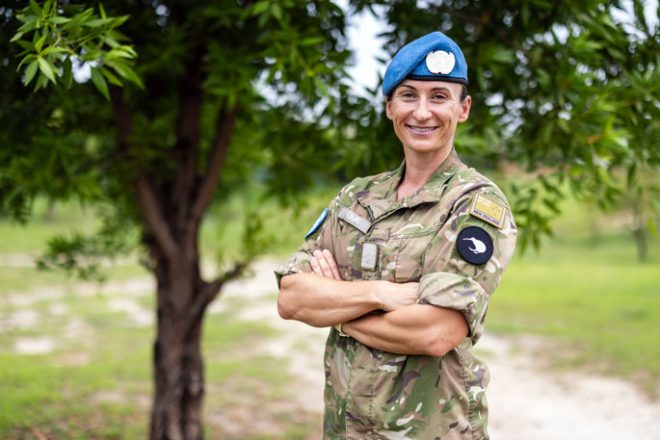艾米丽·休姆(Emily Hume)中校和她在南苏丹的团队正在努力为即将举行的关键选举做准备,同时也在努力防止该国北部发生人道主义危机。南苏丹是一个非洲国家,正在处理许多问题,包括政治不稳定、内战、人道主义危机、种族和部落冲突以及经济问题。
联合国南苏丹特派团是世界上最大的维和特派团,拥有约18,000名人员。来自新西兰的休谟中校是当地的高级国家军官。她负责新西兰小组的福利,该小组与其他国家的军事伙伴、联合国警察、联合国文职人员和人道主义机构合作。他们的目标是监督和平协议,保护平民,帮助提供援助。
休谟中校曾三次被派往海外,此前曾在所罗门群岛和黎巴嫩执行任务。现年36岁的她是负责南苏丹14,000名联合国军事人员的长期规划的副首长。她还与南苏丹各地的团队、特派团总部和纽约联合国总部进行沟通。
她在南苏丹的首要任务之一是领导一项研究,以了解该特派团是否有足够的军事资源来完成任务。这段经历使她对实地小组所面临的挑战有了更深入的了解,包括在基础设施有限且没有预警系统的国家应对日益加剧的紧张局势。
她部署中最具挑战性的部分是看到许多南苏丹人生活在贫困和困难之中。她说,该国1100万人中约有830万人依赖人道主义援助。自4月份邻国苏丹爆发冲突以来,这种情况进一步恶化。
联合国正在努力防止苏丹附近地区出现人道主义危机,在这些地区,返回南苏丹的人数、逃离暴力的难民和境内流离失所者激增。同时,他们正在为该国自2011年获得独立以来的首次大选做准备,大选计划于明年举行。
休谟中校认为,支持南苏丹对新西兰来说很重要,因为那里的许多人的生活非常艰难。她说,她工作中最有意义的部分是看到联合国对社区产生的积极影响,无论是提供清洁用水、支持当地学校、重建监狱,还是追究人们对其行为的责任。
自2011年以来,新西兰一直通过该特派团支持南苏丹的和平努力。在南苏丹独立之前,新西兰还在2005年至2011年期间向联合国苏丹特派团派遣了人员。




























































